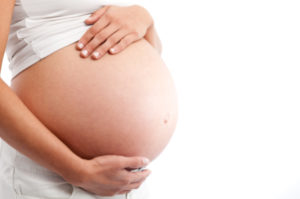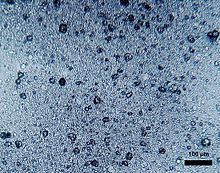 Interesting, yet disturbing, research found microplastics in human placentas and also that the microplastic contamination of placentas has been rising steadily since 2006. During this time global plastic production has also increased.
Interesting, yet disturbing, research found microplastics in human placentas and also that the microplastic contamination of placentas has been rising steadily since 2006. During this time global plastic production has also increased.
Microplastics are the teeny, tiny plastic particles (less than 5mm or .20 inches in length) that are a result of plastics breaking up over time. The big question now is: Are microplastics also getting into the fetus?
University of Hawaii researchers examined 10 healthy human placentas in each of these years: 2006, 2013, and 2021. Microplastics were found in six of the 10 (60%) in 2006, 9 out of the 10 (90%) in 2013, and in all placentas (100%) in 2021. Only a sample (50 grams) was taken from each placenta, but it was clear that the number of microplastics found also increased over time: 22 particles from 2006, 38 particles in 2013, and 82 particles in 2021.

Another concern is that microplastic particles leach chemicals, and also that some of the particles found in the placentas had endocrine disrupting properties. It is unknown at this time what the effects are from microplastic accumulation in our bodies. Perhaps they have no effect, but absolutely no one thinks they are beneficial. So far other research has found microplastics in the human gut, lungs, bloodstream, and reproductive organs (male testes, female breasts).
Microplastics are of concern to all of us because we are ingesting them in our foods and beverages (especially bottled water), absorbing them through our skin, and breathing them in. Think of all the plastic products we use (e.g., toothpaste, bottled water, computers, cell phones, plastic bags) and wear (synthetic fabrics) daily.
From Science Daily: Rise of microplastics discovered in placentas of Hawaii mothers
A placenta (commonly known as the "afterbirth" or "ʻiewe" in Hawaiian) is a temporary organ which connects the mother to the fetus via the umbilical cord. Its purpose is to deliver nutrients and oxygen to the fetus while serving as a barrier to prevent infections or viruses from entering the developing fetus.
A new study by researchers at the John A. Burns School of Medicine (JABSOM) at the University of Hawaiʻi at Mānoa and Kapiʻolani Medical Center for Women & Children examined placentas donated by women who delivered in Hawaiʻi from 2006 to 2021, and found the presence of microplastic particles in the placenta.
Microplastics are visible to the naked eye, and examples can range from the plastic beads once found in exfoliating soaps, to particles from disintegrating plastic bags, to bits of plastic found in microwavable containers which are then inadvertently consumed by humans.
"We were shocked that these little pieces of plastic were getting across the mom's gut and landing in the placenta," said Men Jean Lee, an obstetrician and researcher at JABSOM and Kapiʻolani Medical Center.
The researchers collected and studied 10 placentas in 2006, 2013 and 2021 and found the presence of microplastics grew each year. In 2006, 6 of the 10 placentas contained microplastics. In 2013, microplastics were found in 9 of the 10 placentas. In 2021, researchers found microplastics in all 10 placentas.
"We believe that the plastics may be floating around in food or being inhaled. It's coming through our digestive fluids or lungs, and the particles are getting absorbed through the gut and traveling through the bloodstream, and then somehow collecting in the placenta during pregnancy," Lee said.
"The big question is, as it's traveling through the placenta, can it get through the umbilical cord and then to the baby? We don't know that right now."
We know that the rise in microplastics found in the placentas of Hawaiʻi mothers corresponds with the skyrocketing levels of global plastic production. According to the Journal of Hazardous Materials, more than 6,000 megatons of plastic were produced in 2020. Less than 2,000 megatons were produced in 2000.
The big question is, as it's traveling through the placenta, can it get through the umbilical cord and then to the baby?
Lee believes HHawaiʻi's remote location creates an added dependency on plastic.
"For daily conveniences, we commonly use plastic wrap, plastic containers, plastic bags and single use water bottles."
"The incineration of garbage, landfills and marine pollution affect our communities. When trash is being burned, dust particles are released, and can spread into the air we breathe," Lee said.
